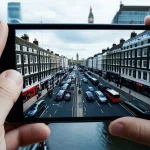How media coverage influences public perception: key insights for 2025
In today’s fast-paced world, the way news is covered shapes how we see the events around us. Recent research from the Reuters Institute (2024) reveals that 68% of people say media coverage directly affects their trust in news sources. But how much does the angle or tone really sway your views? Let’s explore what this means for you as a news consumer in 2025.
Additional reading : What are the breakthroughs in medical research this year?
The impact of media coverage on shaping public opinion
Media coverage wields a powerful influence over what we think and believe. Whether through traditional news outlets or the ever-evolving landscape of social media, the way stories are framed can sway public opinion in subtle—and sometimes not so subtle—ways. For example, during major events like elections or public health crises, the prominence and tone of coverage often shape people’s perceptions more than the facts themselves.
Recent research reveals just how complex this process is. A 2023 study found that people are not only influenced by the content they see but also by how their social circles react to it online. This means public opinion isn’t formed in isolation but is a dynamic conversation, woven through continuous exposure and discussion across various platforms. So, as you scroll through your feeds or catch the evening news, remember you’re part of a larger narrative that media coverage actively shapes—sometimes guiding, other times reflecting, the public mood.
Also to read : How are social movements transforming societies globally?
Why biased coverage can alter how people view the news
When news coverage leans toward a particular viewpoint, it shapes the lens through which audiences interpret events. In the UK and other English-speaking regions, this bias can subtly influence public perception, sometimes casting political or economic stories in a light that favours one side over another.
Take, for example, the financial crisis reporting in 2008. Some outlets emphasised government failures, while others highlighted market forces, leading to varied public opinions about accountability and recovery strategies. Such framing doesn’t just inform—it steers trust and opinions, often reinforcing existing beliefs.
As consumers of news, recognising this bias encourages a critical approach. It helps us understand why two people might walk away from the same story with completely different takeaways. In a media landscape bustling with diverse organisations, embracing this awareness can foster a more balanced and informed community dialogue.
Key ways media coverage shapes public views today
Media coverage plays a powerful role in shaping how we see the world. Beyond just sharing facts, it influences our perceptions through subtle—and not so subtle—techniques that affect what we pay attention to and how we interpret information.
- Framing: The way stories are presented can highlight certain aspects over others, guiding your interpretation without you even noticing.
- Repetition: Hearing the same message repeatedly makes it more familiar and, often, more believable, affecting what you’re likely to think about an issue.
- Emphasis: Media outlets may stress dramatic or emotional elements to capture attention, which can skew how balanced or urgent a topic feels.
- Social media influence: Today, platforms like Twitter and TikTok amplify news rapidly, shaping public opinion through shares, comments, and viral posts.
- Trusted sources: People tend to trust familiar news organisations, which means their coverage significantly impacts what is accepted as credible information.
Understanding these mechanisms helps you navigate the flood of information more critically, fostering a clearer, more nuanced perspective on current events.
How different types of media influence trust in news outlets
When it comes to trust in news, not all media are created equal. Traditional news organisations like the BBC and The Guardian have long enjoyed a reputation for fairly balanced coverage in the UK, often seen as reliable sources by a broad audience. Their editorial standards and accountability measures contribute to a level of trust that digital platforms sometimes struggle to match.
On the other hand, digital platforms and social media introduce a different dynamic. While they offer immediacy and a wealth of perspectives, they also facilitate the rapid spread of misinformation. In the UK, social media channels like Twitter and Facebook can shape public perception quickly but are less likely to be trusted as primary news sources. People tend to think of social coverage as informal and sometimes biased, which can undermine confidence in the information shared.
Ultimately, the varying effects on public trust highlight the importance of critical engagement with news sources. Understanding these differences helps us appreciate why some platforms are preferred for trustworthy news, while others serve more for discussion and opinion.
The role of media coverage in raising public awareness
When the media shines a fair and timely light on events, it empowers communities by delivering clear, accurate information. In the UK, recent coverage of social movements and political debates has sparked meaningful conversations, encouraging citizens to engage actively with current affairs. Well-informed coverage helps people see beyond headlines, fostering a deeper understanding of complex issues.
Take, for example, the widespread reporting on environmental protests last year. Balanced media attention not only highlighted the activists’ messages but also presented differing viewpoints, allowing readers to form their own opinions and get involved. This kind of responsible journalism builds trust and motivates participation, proving that media coverage isn’t just about sharing news—it’s about inspiring civic action and strengthening democratic dialogue.
Questions about media coverage and public perception answered
How does media coverage influence the way people view the news?
Media coverage shapes our understanding by highlighting certain events and angles. It frames stories, influencing which issues we see as important and how we interpret them, often guiding public focus and opinion without us even realising it.
Can biased media coverage change public perception?
Yes, biased coverage can skew public perception by emphasising specific viewpoints or omitting facts. This selective presentation may reinforce stereotypes or misinform, affecting how people trust and engage with news sources.
What role does media coverage play in shaping public opinion?
Media sets the agenda by determining what topics get attention. It influences debates and opinions by providing context, expert insights, or emotional stories, helping form a collective viewpoint on current affairs.
How do different types of media coverage affect public trust in news?
Trust varies with coverage style: balanced, transparent journalism tends to build confidence, while sensational or inconsistent reporting can erode trust, leading audiences to question media reliability and biases.
Why is media coverage important for public awareness and perception?
Coverage informs and educates the public, raising awareness of events and issues. It encourages civic engagement and helps people make informed decisions, crucial in a democratic society.
What services does your media organisation offer to ensure balanced reporting?
We provide fact-checked, diverse insights across topics, ensuring balanced, clear reporting. Our commitment is to open dialogue and community engagement, helping readers navigate complex news with trust and clarity.







